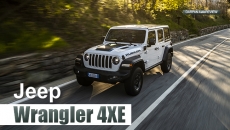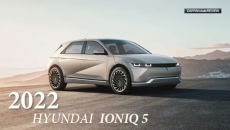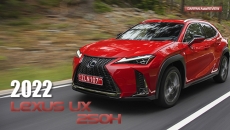The Honda CR-V and Toyota RAV4 are two of the most popular SUVs on sale today. With their spacious cabins, large cargo holds, and the elevated ride height SUV shoppers love, each makes a strong case for itself as a family-friendly people mover with room for five on board. But if their prices seem out of reach, know that Honda and Toyota offer smaller, less expensive alternatives: the Honda HR-V and the Toyota Corolla Cross.
These two subcompact SUVs are affordable, feature standard smartphone connectivity, and have available all-wheel drive. Their smaller size means they’re easy to maneuver, while their fuel-sipping engines make them gentle on a fuel budget. The 2023 HR-V is completely redesigned and boasts more cabin space, cargo volume, and added horsepower than before. Toyota’s Corolla Cross is entering its second year of production for 2023 and boasts a long roster of standard safety features, along with a newly standard 8-inch touchscreen. Which one is the better buy? Edmunds’ car experts compare them to find out.
PERFORMANCE
The Honda HR-V and Toyota Corolla Cross are certainly practical considering their size. Performance, particularly highway passing power, is not high on the engineering agenda, however.
In the engine bay of the 2023 HR-V is a 2.0-liter four-cylinder that sends 158 horsepower to the front wheels via a continuously variable automatic transmission (CVT). Unfortunately, acceleration is meager, and the HR-V quickly runs out of steam on the highway. On the plus side, the HR-V feels planted and secure when going around corners.
The Toyota Corolla Cross provides a similar driving experience. All three of the Corolla Cross trim levels come with a 2.0-liter four-cylinder that produces 169 horsepower and works with a CVT. Despite the power advantage, acceleration is just as leisurely. The Corolla Cross is a little less enjoyable to drive than the HR-V, but not enough to make a big difference.
Winner: tie
FUEL ECONOMY
The Corolla Cross does make up ground by providing higher fuel efficiency. In its front-wheel-drive configuration, the Corolla Cross bests the HR-V with its combined city/highway average of 32 mpg compared to the HR-V’s 28 mpg combined. This advantage remains when both are fitted with all-wheel drive. Toyota also offers a hybrid version of the Corolla Cross, something Honda doesn’t currently do for the HR-V.
Winner: Corolla Cross
COMFORT
This competition seesaws depending on where you’re perched. Edmunds found the front seats in the HR-V exceedingly firm and compared them to sitting on a wooden bench. But overall headroom and legroom in either row are generous.
In the Corolla Cross, the front row is where you want to be thanks to its more supportive seats. Things are less rosy behind. Tall adults relegated to the second row will need the person sitting ahead to scoot forward to free up some rear legroom. If you regularly travel with taller rear passengers, the HR-V is the better pick. The Corolla Cross does have a smoother ride over bumps and ruts, however.
Winner: tie
CARGO SPACE AND TECHNOLOGY
The HR-V and Corolla Cross have simple and user-friendly cabins. Each has an intuitive operating system that comes standard with wired Apple CarPlay and Android Auto, multiple USB ports, and optional features like wireless device charging and wireless smartphone connectivity. The Honda’s screen measures 7 inches wide, though a 9-inch screen is fitted to the range-topping EX-L trim. An 8-inch screen is used in all Corolla Cross trims.
Cargo space on the spec sheet is a near dead heat. The HR-V has 24.4 cubic feet of room behind its folding split second row, versus 24.3 cubic feet of space in an all-wheel-drive Corolla Cross. But in real-world testing, we found the HR-V’s cargo area to be a little roomier. The HR-V also has a more upscale cabin design compared to the blander layout and budget-minded plastics found in the Corolla Cross.
Winner: Honda HR-V
PRICING AND VALUE
Value is a huge draw among small SUVs with fuel-conscious engines, and the HR-V and Corolla Cross follow this established blueprint. Each comes standard with advanced driver assist features such as adaptive cruise control, lane departure warning, automatic high-beam headlights and a rear-seat reminder.
Their base prices are closely matched, starting at about $25,000 including destination fee. Fully loaded trims of either similarly run to just under $30,000.
Both the HR-V and Corolla Cross come with a three-year/36,000-mile limited warranty and a five-year/60,000-mile powertrain warranty, plus two years of free scheduled maintenance.
Winner: tie
EDMUNDS SAYS: In the narrowest of wins, the 2023 Honda HR-V squeaks past the 2023 Toyota Corolla Cross thanks to its classier cabin and livelier driving experience. But considering how close this competition proved, it would be smart to take each for a test drive.






